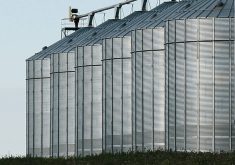By Theopolis Waters
CHICAGO, Feb 20 (Reuters) – The number of cattle placed in U.S. feedlots in January fell compared with a year ago, a USDA report showed Friday, but was slightly more than expected, said analysts.
Lower cash cattle prices discouraged some ranchers from sending them for fattening in feedlots, whose margins suffered due to high-priced calves.
Fewer breeding cattle entered the slaughter mix as ranchers held them back to rebuild the U.S. herd, halting a seven-year decline after prolonged drought damaged crops and pastures.
Read Also

China holds off on soybean purchases due to high Brazil premiums, traders say
China has yet to secure much of its soybean supply for December and January as high premiums for Brazilian cargoes discourage buyers.
The U.S. Department of Agriculture report put the feedlot cattle supply as of Feb. 1 at 10.711 million head, nearly unchanged from 10.678 million a year ago.
Analysts, on average, had forecast a 0.1 percent decline.
January placements were 1.787 million head, down 11 percent from 2.014 million last year, however last year’s January placements were the largest for the month since 2006.
Analysts, on average, had expected a 12.7 percent January placement decrease.
The government revised last year’s placement and supply figures to reflect the removal of cows and bulls from previous estimates.
The government said the number of cattle sold to packers, or marketings, was down nine percent in January from a year ago, at 1.625 million head. It was the lowest for January since USDA began calculating the data in 1996.
Analysts had projected a drop of 8.2 percent because of one less weekday to market cattle than in January 2014.
University of Missouri livestock economist Ron Plain said the report was slightly bearish because ranchers placed more cattle than expected and marketed slightly fewer than anticipated.
However, analysts said Chicago Mercantile Exchange live cattle futures may not respond too negatively, if at all, to Friday’s report.
The January 2015 placement result was still relatively low compared with last year, and futures had already suffered heavy losses before the data’s release, they said.














